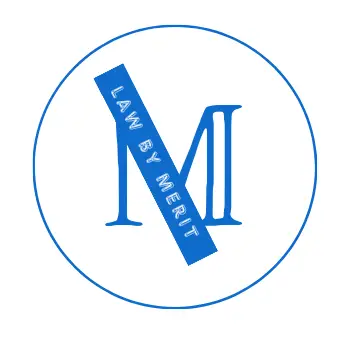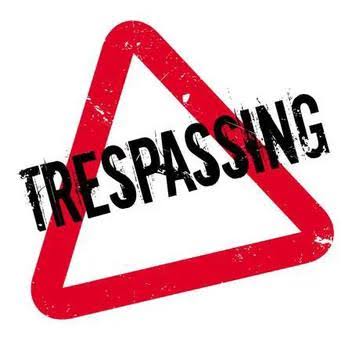The term “on view arrest” is a legal and law enforcement concept that refers to a specific type of arrest made by a law enforcement officer without the need for a warrant or a formal complaint from a private citizen. This term is primarily used in the context of criminal law and police procedures in the United States, although similar concepts exist in other jurisdictions around the world.
What Does ‘On View Arrest’ Mean?
An “on view arrest” occurs when a law enforcement officer witnesses a person committing a crime or has reasonable cause to believe that a crime has been committed, and they decide to make an arrest based on their own observations and judgment. In other words, the officer doesn’t need to have a warrant or a direct complaint from someone else to take action.
An “on view” arrest, also known as a “sight arrest” or “warrantless arrest,” occurs when a law enforcement officer witnesses a person committing a crime and subsequently arrests them without the need for a prior arrest warrant. This type of arrest is based on the immediate observation of criminal activity by the officer.
The concept of on view arrests is rooted in the officer’s duty to uphold the law and prevent ongoing criminal activity. When an officer personally sees someone engaging in unlawful behavior, such as theft, assault, or drug possession, they have the legal authority to take immediate action by detaining and arresting the individual responsible.
On view arrests are generally considered lawful and are an essential tool for law enforcement in responding promptly to criminal activities as they unfold. However, the legality of such arrests hinges on the officer’s reasonable belief that a crime is being committed in their presence. If the arrest is later challenged, the officer may be required to justify their actions in court.
In summary, an on view arrest occurs when a police officer directly witnesses a crime and arrests the perpetrator without obtaining a prior arrest warrant, based on the principle of immediate law enforcement action to prevent and address criminal activity.
Elements Of ‘On View Arrest’
Here’s a detailed breakdown of the key elements and implications of an “on view arrest”:
1. Observation of a Crime:
An on view arrest begins with a law enforcement officer personally witnessing a person engaging in criminal activity. This observation is a critical element, as it establishes the officer’s justification for taking immediate action without obtaining an arrest warrant. The officer must have a clear and direct view of the criminal behavior, ensuring that there is no ambiguity regarding the offense committed.
The types of crimes that can lead to on view arrests vary widely, ranging from theft and assault to drug possession or distribution. The officer’s role is to assess the situation, gather evidence, and determine whether the observed behavior constitutes a violation of the law. This observation is the trigger for the subsequent arrest and legal proceedings.
2. Probable Cause:
One of the fundamental legal principles underlying an on view arrest is the requirement of probable cause. Probable cause is a standard of evidence that suggests a reasonable belief that a crime has occurred or is occurring. In the context of an on view arrest, the officer’s observation of the criminal activity serves as the basis for establishing probable cause.
To make an on view arrest legally valid, the officer must demonstrate that their observation provided sufficient grounds for believing that a crime had taken place. This requires a higher degree of certainty than mere suspicion. Courts often assess whether a reasonable and prudent person, in the officer’s position, would have concluded that a crime was occurring based on the observed behavior.
3. Immediate Action:
Once an officer observes a crime and establishes probable cause, they are authorized to take immediate action to detain and arrest the person responsible. Immediate action is a crucial element of on view arrests because it allows law enforcement to prevent ongoing criminal activity, protect potential victims, and preserve evidence.
In most cases, the officer will approach the individual, identify themselves as law enforcement, and inform the person that they are under arrest. The individual is then typically taken into custody, and their rights, such as the Miranda rights, may be read to them. Immediate action is essential for maintaining public safety and enforcing the law in real-time situations.
4. Exigent Circumstances:
Exigent circumstances refer to situations where there is an urgent need for law enforcement action due to factors like public safety, the risk of evidence destruction, or the potential for a suspect to flee. This element plays a significant role in justifying on view arrests.
In some cases, an officer’s decision to make an on view arrest is influenced by exigent circumstances. For example, if an officer witnesses a violent assault, they may need to intervene immediately to prevent further harm. Similarly, if they observe a drug transaction and believe that the suspects are about to disperse, they may make an arrest to preserve evidence.
Courts often assess whether the officer’s decision to act without a warrant was reasonable given the exigent circumstances present at the time of the arrest. This evaluation is crucial in determining the legality of the arrest.
5. Judicial Review:
While on view arrests allow law enforcement officers to take immediate action, they are subject to judicial review after the fact. This review is a fundamental safeguard in the legal system to ensure that arrests made without warrants were justified and lawful.
After an on view arrest, the arrested individual has the right to challenge the legality of the arrest in court. This can involve questioning the officer’s observation, probable cause, or whether exigent circumstances truly existed. The court will examine the evidence and circumstances surrounding the arrest to determine its validity.
If the court finds that the on view arrest was not supported by sufficient probable cause or was made without proper justification, the consequences can include suppression of evidence, dismissal of charges, or potential civil claims against law enforcement for unlawful arrest.
In summary, an on view arrest involves the observation of a crime by a law enforcement officer, the establishment of probable cause, immediate action to detain and arrest the suspect, consideration of exigent circumstances, and subsequent judicial review to ensure the arrest’s legality. These elements collectively ensure a balance between law enforcement’s duty to protect the public and an individual’s rights under the law.
RELATED:
Postal Inspector Came To My House (Here’s Why)
Can A Priest Report A Crime From Confession? (Answered)
Is It Illegal To Give Away Food Stamps? Know The Law
Frequently Asked Questions
1. What types of crimes typically lead to on view arrests?
On view arrests can be made for a wide range of crimes, from relatively minor offenses like shoplifting or public intoxication to more serious crimes like assault, drug trafficking, or even murder. The key factor is that the arresting officer must witness the crime or have reasonable cause to believe it has occurred. The severity of the crime does not determine whether an on view arrest can be made; it’s the immediacy and the evidence at hand that matter.
2. How does an officer establish “reasonable cause” for an on view arrest?
Establishing reasonable cause is a critical aspect of on view arrests. It means that the officer must have enough objective evidence to reasonably believe that a crime has been committed. This evidence can include witness statements, physical evidence, surveillance footage, or even the suspect’s behavior. Officers often receive training in recognizing and documenting reasonable cause to ensure their actions stand up to legal scrutiny.
3. What if an on view arrest is made, but the suspect is later found innocent or charges are dropped?
An on view arrest does not guarantee guilt; it is simply a way for law enforcement to initiate the legal process. If the suspect is later found innocent or if charges are dropped due to insufficient evidence, they can seek remedies such as expungement to clear their record. In cases of wrongful arrest or misconduct by law enforcement, individuals may have the option to pursue legal action against the arresting officer or department.
4. Are there any situations where on view arrests are not allowed?
While on view arrests are a valuable tool for law enforcement, there are situations where they may not be allowed or are subject to stricter limitations. For example, if an officer’s observation is tainted by an illegal search or seizure, any resulting on view arrest may be challenged in court. Additionally, there are certain legal immunities that may protect individuals, such as diplomatic immunity or protections for undercover law enforcement officers.
5. Can civilians make on view arrests?
In some jurisdictions, civilians have the legal authority to make on view arrests under specific circumstances. These circumstances often involve crimes that are considered “in progress” or where there is an immediate threat to public safety. However, the rules and limitations regarding civilian arrests vary widely by jurisdiction. Generally, it’s recommended that civilians leave law enforcement duties to trained professionals and instead act as witnesses and report crimes to the police.
In conclusion, on view arrests are a complex aspect of law enforcement, allowing officers to take swift action when they witness crimes or have reasonable cause to believe they have occurred. Understanding the legal principles and safeguards surrounding on view arrests is essential for both law enforcement personnel and the general public to ensure that justice is served while protecting individual rights and liberties.
Last updated on: April 27, 2024




